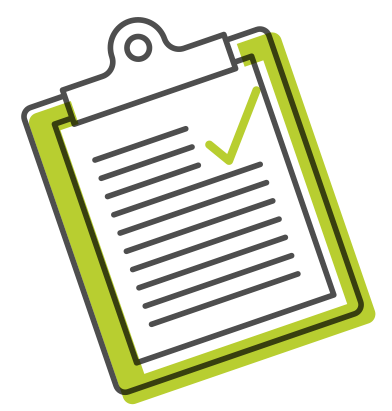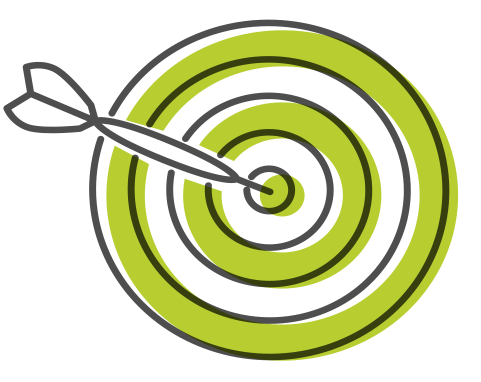Your marketing exists to help sell your products or services, and to do that effectively, you need it to reach the people most likely to buy. According to Melissa Eggleston, content marketing strategist and author of The Zombie Business Cure, focusing on your audience is essential to pursuing almost any marketing goal. Once you know who you want to address, she says, “You have to ask yourself, ‘What do we know about marketing to this group? What do we know is important to this audience?’ ”
While there are many effective ways to target your audience, you need to find a process that works for you, your business, and your budget. These ideas could help you make the most of your marketing dollars.
STEP ONE: IDENTIFY AND UNDERSTAND YOUR AUDIENCE.
Your customers, or would-be customers, are your audience. You can start with your existing customer base, and also consider people who might benefit from your product or service.
• Research
Once you have a sense of who your audience might be, find out more about them—you don’t have to pay for research. “See what Pew Research says about your potential customers,” Eggleston suggests. “You can look online for articles that help you understand your customers’ demographic.”
• Dig Deeper
As you focus on a particular audience, try to avoid assuming things that you can’t back up with facts. Eggleston suggests asking yourself what assumptions you have about your audience and then looking for ways to validate them. “You might say, ‘Oh, all women over 40 like cats,’ but is that true?” Eggleston says. She recommends searching online to get hard information from Census Bureau records and other reliable sources.
• Go Beyond Demographics
Eggleston also encourages marketers not to think of their audiences strictly in terms of their age or other demographic characteristics. “It’s easy to give demographic examples because that’s just how we tend to categorize and group people,” Eggleston says. “But if you think about behavior, too, you’ll often find that your audience crosses demographic lines.” You might have a product for older people, for instance, but find out that it’s usually their children who purchase it—and thus your audience may be younger than you’d assumed. “Thinking in terms of behaviors is a nice way to classify audiences versus just slicing it demographically,” Eggleston says. “Digging deeper into the research always helps.”
STEP TWO: CONNECT WITH YOUR AUDIENCE.
Once you know the group or groups you want to connect to, think about how to reach out to them, both with specific content that may appeal to them, and through channels most likely to reach them. “Trying to be everything to everybody is the surest way to fail,” Eggleston says. “You need to figure out who your top audience groups are and then really speak to them.”
• Channels
Your target groups may be particularly likely to use one social media platform or to consume a specific kind of online content. If you’re looking to reach teenagers, content on Snapchat might be effective, for example, while families with kids may prefer email marketing or Facebook. The more you know about your audience, the more effectively you can target your message.
• Content
Consider targeting particular groups or subgroups of your audience with different strategies and kinds of content most likely to appeal to them. “Again, here is where research can help you. Take what you know about your audience, and see what appeals to them,” Eggleston says.
STEP THREE: FOLLOW UP TO MAKE SURE YOU’RE REACHING THE AUDIENCE YOU WANT.
Track your efforts to see what’s working. Marketing is an investment in your business, and the ultimate goal should be to optimize the impact of every dollar you spend. To track the ROI of each effort, regularly collect data on all of your initiatives and analyze the results. As part of that process:
• Compare your results with your goals.
If you’re missing the marks you set, investigate. Was it a problem with execution? Are you not reaching the sweet spot of your desired audience? And learn from your successes, too. Are there ways to expand winning initiatives or achieve the same results even more efficiently?
• Use the tools within reach.
Eggleston relies on a site called usabilityhub.com, which offers user testing, including click testing and navigation tests, to check whether her marketing messages are hitting the mark. Checking your message with data can be useful.
• Consider a focus group.
“Sometimes we’re using a word that’s off-putting or language that seems outdated,” Eggleston says. “Getting your message in front of real people is always helpful before you spend a lot of money on a big campaign.”
• Look at multiple indicators.
No single metric can tell you all you need to know, so be sure to assess your marketing from multiple perspectives.
• Review your performance every quarter.
Keeping track of your progress can help you to ramp up efforts that are working and adjust those that aren’t, preventing small missteps from becoming bigger, and more expensive, problems. No matter the size of your budget, careful planning can optimize the funds you have and bring you closer to achieving your marketing goals. A focused, efficient, and strategic approach to audience targeting can help your company to engage your customers, grow your business, and improve your bottom line.





